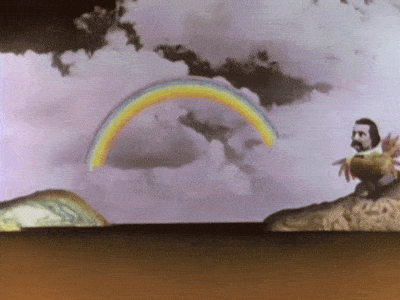
Get in touch
- contact@hilarystoddard.com
- 919-706-5998
- Raleigh, NC

“THE WORLD IS A MILLION POSSIBLE THINGS.”
Terry Gilliam
Terry Gilliam’s imaginative, bizarre art has always spoken to me. Gilliam was the sole Yank in British comedy troupe Monty Python, and he contributed the title animations and animated interludes to its TV show, Monty Python’s Flying Circus. Gilliam’s eccentric animations helped cement the show as a comedy classic. His art has a distinct cut-and-paste feel, and with good reason. Gilliam cut out photos from magazines and newspapers, combined them with his original art, and created stop-motion animations of scenes like the below clip, in which an anonymous arm reaches from off-screen to grab a leaf off the nether-regions of Michelangelo’s David.

Gilliam’s unmistakably surrealist visual language pays homage to Dadaist art, an avant-garde movement from the beginning of the 20th century in which artists used their work to critique the absurdities of society. Artists like Marcel Duchamp used found objects, also called readymades, and repurposed them to create “rectified” scenes. Duchamp famously drew a mustache on an image of Da Vinci’s Mona Lisa in his work L.H.O.O.Q.

Gilliam’s animations were always surreal and often crass, appealing especially to a young generation of Python viewers. But the art itself was never puerile. Gilliam, who says he was influenced by MAD Magazine in high school, combined elements of aristocracy and authority figures with grotesque imagery like tentacles and fungus.

Monty Python’s Flying Circus Intro
Like the Dadaists before him, Gilliam wanted to critique bourgeois society, and what better way than animating an enormous foot to crush a bunch of stuffy old men?
Gilliam went on to direct feature films, including The Adventures of Baron Munchausen, Brazil, Time Bandits, and 12 Monkeys.
